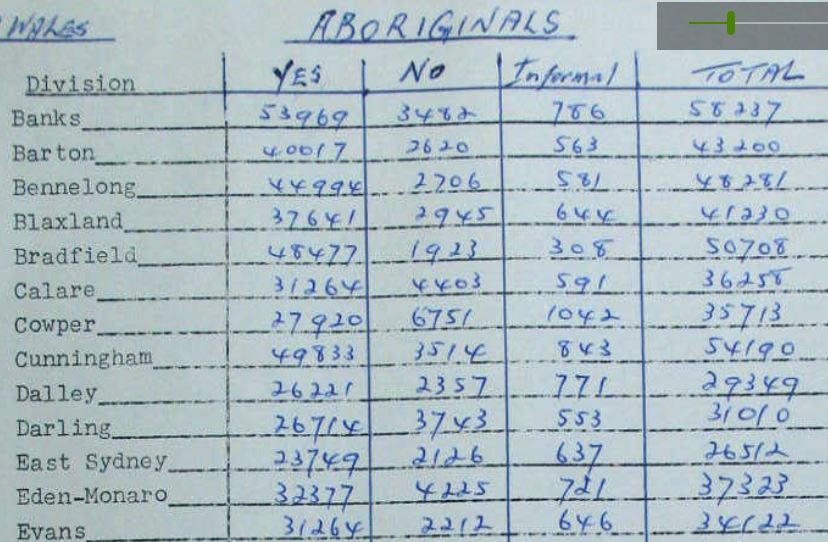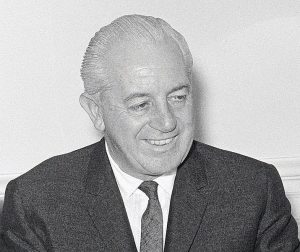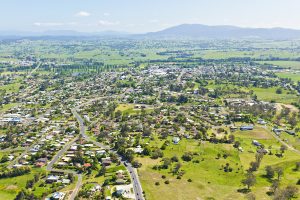“Weather throughout the Division was fine,” on May 27, 1967, according to the Electoral Commission’s man in Eden-Monaro, Divisional Returning Officer, J.B Oehm.
Mr Oehm’s pedestrian wrap up of this landmark referendum gives no hint of the local debate and discussion of the time, historian Mark McKenna suggests these were challenging times in a town like Bega.
Much is being made of the anniversary of this vote, which some (me included) thought gave Aboriginal people the vote. That happened five years earlier, although Queensland took its time only signing on in 1965.
Two questions were posed to the people of Australia on May 27 1967, which came just six months after the general election that made Harold Holt prime minister. Holt beat Labor’s Arthur Caldwell in a landslide, 82 seats to 41.
Just seven months later Holt disappeared from Victoria’s Cheviot Beach, but the mark of his Prime Ministership and the bipartisanship of the time is still being celebrated 50 years on.
The first question was an attempt to increase the number of seats in the House of Representative without increasing the number of Senators in the Upper House, voters rejected the change 60% to 40%.
The second question and the one being remembered this week was to determine whether two references in the Australian Constitution, which discriminated against Aboriginal people, should be removed.
Fact Sheet 150 from The National Archives of Australia explains:
The sections of the Constitution under scrutiny were:
51. The Parliament shall, subject to this Constitution, have power to make laws for the peace, order, and good government of the Commonwealth with respect to:-
…(xxvi) The people of any race, other than the aboriginal people in any State, for whom it is necessary to make special laws.127. In reckoning the numbers of the people of the Commonwealth, or of a State or other part of the Commonwealth, aboriginal natives should not be counted.
The removal of the words ‘… other than the aboriginal people in any State…‘ in section 51(xxvi) and the whole of section 127 were considered by many to be representative of the prevailing movement for political change within Indigenous affairs. As a result of the political climate, this referendum saw the highest YES vote ever recorded in a Federal referendum, with 90.77 per cent voting for change.
The majority of parliamentarians supported the proposed amendment, Prime Minister, Robert Menzies and his cabinet first floated the change in April 1965, but Labor Opposition Leader Arthur Caldwell spoke of his parties support for such a change in 1964.
As such the National Archives say, “a ‘No’ case was never formulated for presentation as part of the referendum campaign.”
Hearing that history in the last few days reminded me of a story I had been told on a number of occasions over the years; that Bega had voted ‘No’ in this famous referendum.
Almost 91% of Australians had voted ‘Yes’ how was it that Bega voted No? And how had other towns in South East NSW voted?
Rolling election night TV coverage was a while off, Kerry O’Brien was just 12. Records have been a challenge to find.
In their 1997 book, ‘The 1967 Referendum‘ Monash University historians, Bain Attwood and Andrew Markus lament that, “No results survive from individual polling booths except for some incomplete figures published in newspapers.”
They go on to say, “These show there was a majority ‘No’ vote in a very small number of booths”
Georgetown (63%) and Charters Towers (39%) in Queensland, and Streaky Bay (39%) in South Australia are some of the dishonorable mentions.
The only local records I’ve been able to find in the National Archives are for the entire electorate of Eden-Monaro, a total of all the towns and villages in South East NSW, where there was a clear majority for the ‘Yes’ vote, in fact 28 152 more votes than ‘No’.

The Eden-Monaro results from the 1967 Referendum, a resounding ‘Yes’. Source: National Archives of Australia.
Eden based historian Mark McKenna got closer to a number on the Bega vote in his acclaimed book, ‘Looking for Blackfellas’ Point’.
McKenna writes, “Twenty-two percent of people in Bega voted ‘No’ on 27 May 1967, compared with the national average of 9.03%.”
So not a majority ‘No’ vote but still significant at double the national average. Why?
Just one month before the polling day The Aborigines Welfare Board announced that they had purchased land in Bega township and planned to build fourteen homes for Aboriginal families.
Up until this time as McKenna points out in his book, Aboriginal families were living on the fringes of town, he quotes a Canberra Times article of the day that describes the reaction of journalists who had visited the settlement at Stoney Creek, north of Bega.
McKenna writes, “They [Canberra Times] had been ‘disgusted’ by the ‘squalid and primitive’ conditions under which fifty Aborigines were living.”
Djiringanj and Ngarigo Elder, Aunty Glenda Dixon was a child at the time, living at that very site, an old tip with her parents and large family.
She told the ABC, “We were treated like animals.”
“At that time they didn’t want the blacks too close to town,” she said.
In giving context to the large ‘No’ vote in Bega in 1967, McKenna draws on another newspaper, the town’s very own.
He writes, “The first editorial in the Bega District News the day after the [new housing] announcement betrayed the shock of many in the town.”
“The editor claimed that Bega was ‘not large enough’ to accept the move without ‘grave concern’.”
“Aboriginal people would be moving into Bega’s ‘prime domestic area’. ‘Ghettos’ would be formed and ‘property values would be affected’,” McKenna details.
Aunty Glenda Dixon recalls the excitement of moving into their new Howard Avenue home.
“Our family was the first Aboriginal family to be housed in Bega, in the township,” she told the ABC’s Right Wrong project.
“We had a stove, we had a shower, which was a big deal to us, we had a toilet that we flushed all the time.
“The locals called it Koon Avenue,” she remembers.
Those attitudes and the size of the ‘No’ vote in Bega at the 1967 referendum remain a blight on the town’s history.
A sunny day has been forecast for May 27, 2017, much the same as described by Mr J.B Oehm in his report back to Electoral Commission HQ 50 years earlier.
Under that sunshine, Aboriginal leaders, including Eden’s Ossie Cruse are meeting at Uluru to determine the next step in reconciliation, perhaps the greatest step, opportunities are ahead for Bega and every town in South East NSW to heal their past.









